Gone are the days when a mummy had to be unwrapped to discover what’s inside. Improvements in medical technology and the application of that technology to archaeological research has helped professionals make huge advances in their studies, especially for ancient Egyptian remains. And its not only human remains that are being examined, animal mummies are also getting scanned. But things don’t always go as planned, for example a recent ‘digital dissection’ of a cat mummy has provided French scholars with an unexpected discovery.
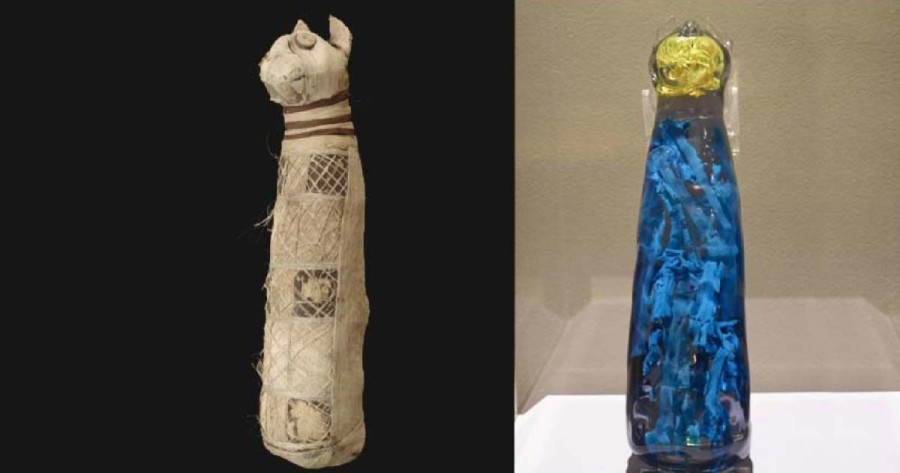
A 2,500-year-old mummified Egyptian cat in the Museum of Fine Arts in Rennes, France was put through a CT scanner to examine what the internal structure looks like. The French National Institute for Preventive Archaeological Research (INRAP) reports that when the archaeologists began to analyze the 3D reconstruction of the mummy’s innards they were given a surprise – no one expected them to get the results they did.
Why Does a Cat Mummy have Three Tails and Five Hind Legs?
As Le Figaro reports, the cat mummy was found to contain not just the remains of a cat, but a mixture of several of the four-legged friends. In fact, the combination seems a little random – the mummy’s interior holds five hind legs and three incomplete tails. And there’s a ball of textile in place of a head. The patchwork creature is also missing vertebrae and ribs.
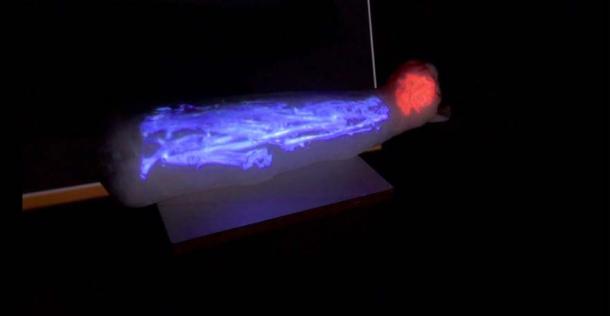
Augmented reality image of what’s inside the cat mummy. (Musée des Beaux-Arts de Rennes)
Although it wasn’t what the experts expected to find, Theophane Nicolas, one of the INRAP researchers, says it’s not too bizarre what they found:
“With a medical scanner, we always expect to find something. In this case, we expected to see a cat and not several cats, but it is perhaps not so exceptional. There are millions of animal mummies, but few have been imagined. Some are empty, others contain only one bone, sometimes the cat is complete. The mummy of Rennes is a variant. Some researchers believe that we are dealing with an ancient scam organized by unscrupulous priests.”
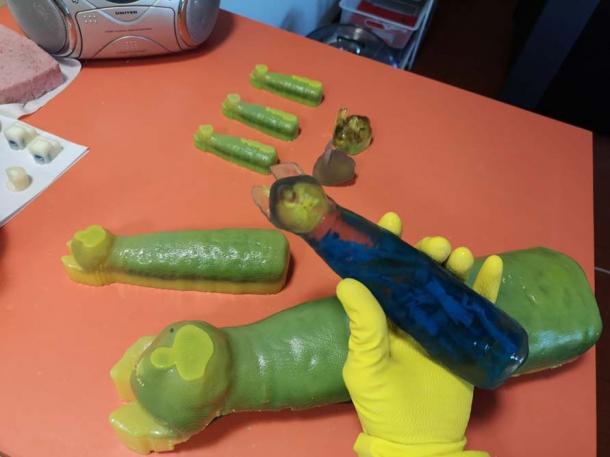
3D reconstruction of the interior of the cat mummy. (Inrap)
The Huge Appeal for Animal Mummies
Liz Leafloor reported on Ancient Origins that “a staggering 70 million mummified animals have been found in underground catacombs across Egypt, including cats, birds, rodents, and even crocodiles.” The industry for animal mummies was huge. But why?
It wasn’t just to keep the four-legged friends around a little longer. Actually, the animal mummification industry has sometimes been referred to as Egypt’s “dark secret,” since some animals were thought to have faced near or total extinction due to the demand for their bodies for more than 1,000 years. People wanted mummified animals to offer as sacred gifts to the many deities they had which held an animal form.
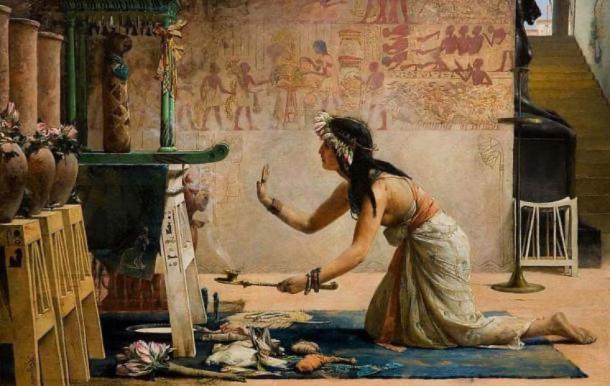
‘The Obsequies of an Egyptian Cat’ by John Reinhard Weguelin, 1886. A priestess offers gifts of food and milk to the spirit of a cat. (Public Domain)
With such a high demand, do you think the purveyors of mummified animals always filled their clients’ requests to the full? I’m sure it doesn’t surprise you to know that no, they didn’t. In 2015, the University of Manchester performed a series of CT scans and X-rays on 800 animal mummies that dated to between 1000 BC and 400 AD. They found that many of the carefully and elaborately wrapped mummies held no bodies or just a few skeletal remains.
Cat Deities in Ancient Egypt
That may explain the odd assortment of bones in the case of the cat mummy in the collection of the Musée des Beaux-Arts de Rennes, however it’s also interesting to explore the topic of which cat deity the mummy may have been made to honor.
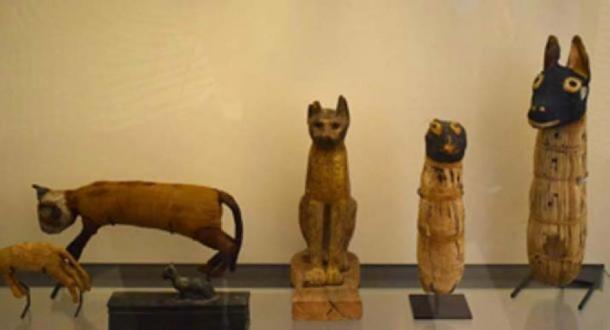
Exhibit showing mummified cats at the Louvre Museum. (Netha Hussain /CC BY SA 4.0)
The first documented example of a feline god in ancient Egypt was Mafdet, a female deity who was worshipped in the First Dynasty of Egypt between 3,400 BC and 3000 BC. She was seen as a protector deity against venomous bites from snakes and scorpions. She was replaced by the more well-known deity of love, passion, joy, women, and pleasure – Bastet – a ferocious and sensual goddess.
Around 3000 BC Bastet was relegated to the guardian of domestic felines and fierce, lion headed Sekhmet took over in prominence. Neith and Mut were also sometimes associated with felines, though to a lesser degree than Sekhmet and Bastet.
Although the cat mummy hodgepodge found in the French Museum of Fine Arts in Rennes is curious, the take home message here is actually how wonderful times are that archaeologists can analyze, interpret, and preserve these mummies at the same time. Having non-destructive options to discover more about the ancient past is a fantastic opportunity to increase our knowledge while continuing to keep the archaeological heritage of our ancestors safe for future generations.
Top Image: The wrapped cat mummy and the 3D reconstruction of what is hidden inside. Source: Musée des Beaux-Arts de Rennes
By Alicia McDermott